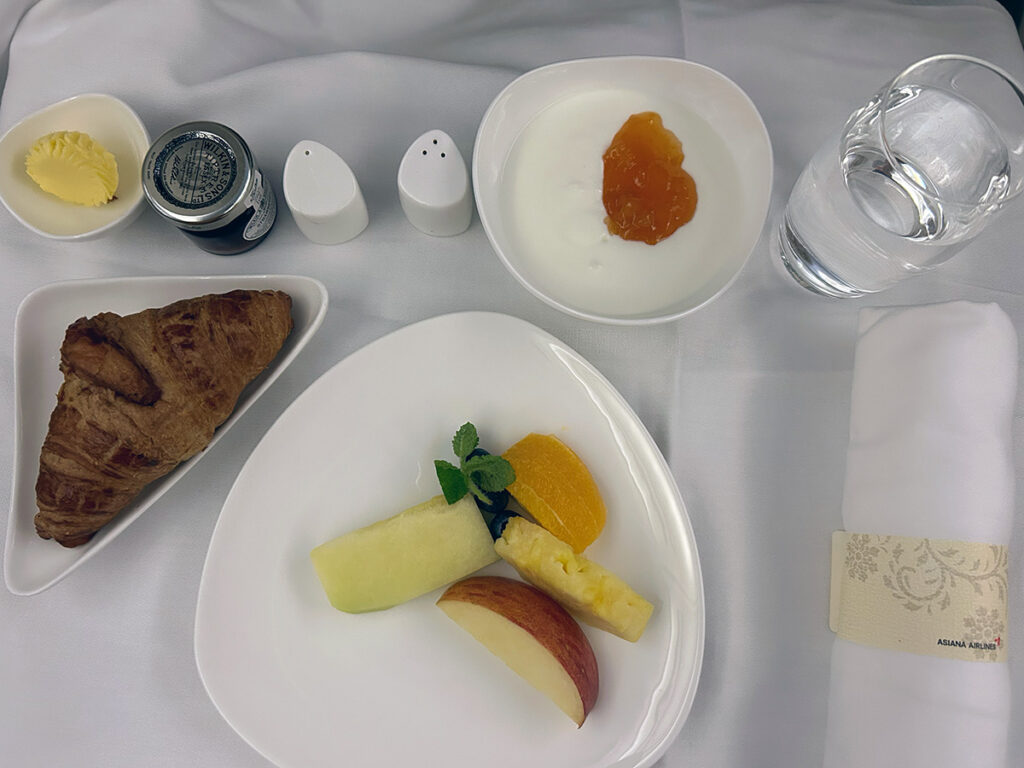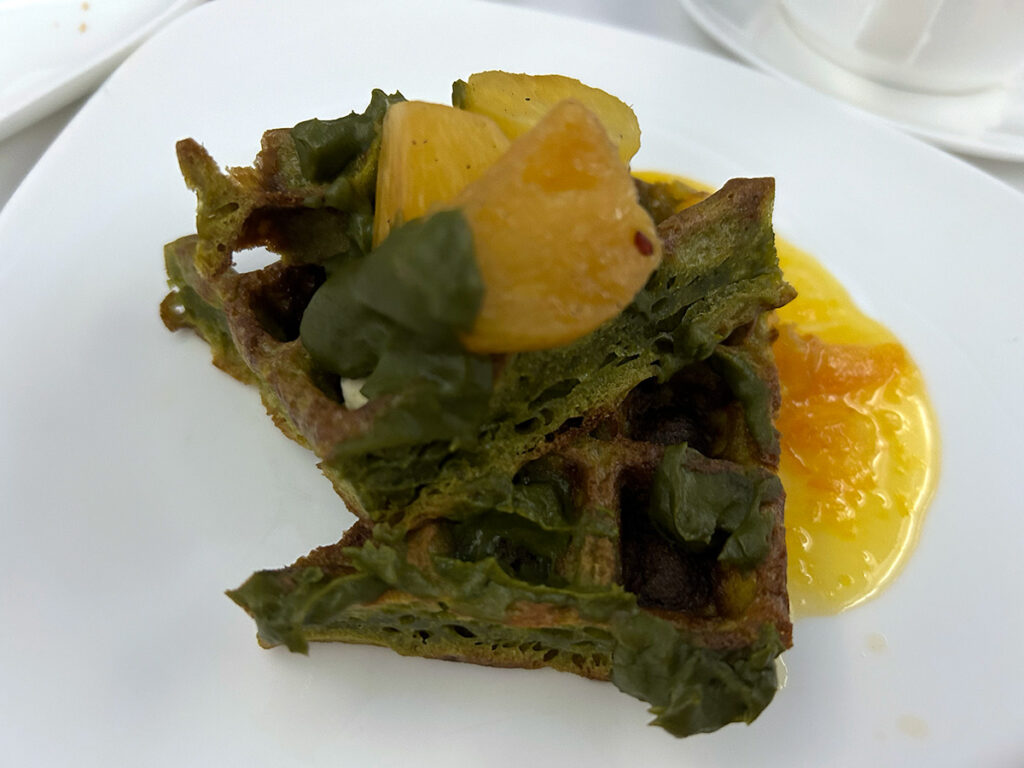What Is It Like to Fly on Asiana Airlines in Business Class?
Our full flight review onboard the airline's Airbus A380 from Seoul to Los Angeles
August 27, 2024

Photo: Courtesy of Asiana Airlines
Returning from vacation is always tough, but the last day of my two-week family trip in Asia was especially difficult. We woke up early but missed our intended airport train, which set a frantic pace for the travel day.
When I finally settled into my Asiana business class seat on flight A380 for the long journey back to Los Angeles (LAX), I was looking forward to nearly 12 hours of comfort to relax and regroup. Here’s how my experience in the business class cabin of an Asiana Airlines flight A380 compared with my expectations.
Boarding
I spent my layover in the Asiana lounge at Seoul Incheon International Airport (ICN), a sprawling, airy space with abundant (if not fancy) buffet-style food service. From there, I made my way to the gate for boarding through three separate jet bridges, given the capacity and two-floor arrangement of the enormous aircraft.

Photo: Courtesy of Alesandra Dubin
The flight boarded on time, and I easily settled in my seat. But although the plane was fully loaded and ready to go, the pilot announced we’d be staying put for a while due to ground traffic. Then it got worse: As we sat on the tarmac, a simmering storm picked up severely, and we could see the rain coming down in sheets outside the aircraft windows.

Photo: Courtesy of Alesandra Dubin
Eventually, the pilot came on again, this time announcing calmly that lightning had struck the Incheon Airport and we’d be grounded indefinitely. This was an inauspicious beginning to a long flight. But it wasn’t as bad as we feared: The weather improved, and we were on our way about two hours late.
The Seat
Asiana Airlines operates its Airbus A380-800 with a three-class configuration. The aircraft features 12 luxurious first class suites and 417 comfortable economy seats on the main deck. During my journey, I enjoyed the exclusivity of one of the 66 business-class “Smartium” seats, which are located on the spacious second floor of the impressive double-decker plane.

Photo: Courtesy of Asiana Airlines
The cabin was understated in muted tan tones, a soothing palette lacking any particular style or modern edge. It was neutral, if a bit drab.
No Wi-Fi was offered on this flight, so I mainly spent the time sleeping. However, there was a lounge area with banquette-style seating in the upper-deck nose area of the aircraft, which I might have used to chat with family members for a change of pace had I been more alert.

Photo: Courtesy of Asiana Airlines
Each seat, boasting a generous width of 22 inches, has a 15.6-inch personal monitor, convenient power supply, and USB charging capabilities, ensuring a seamless and enjoyable travel experience.

Photo: Courtesy of Asiana Airlines
The seat itself was comfortable enough. In fact, I easily converted it into a lie-flat bed for much of the flight and slept comfortably. And the power was dependable for charging. However, the other technical elements of the Asiana business class experience felt a bit lacking.

Photo: Courtesy of Asiana Airlines
The entertainment unit was quite basic in its technical setup and programming options. I watched reruns of Curb Your Enthusiasm. Combined with the lack of Wi-Fi, the flight felt long and unproductive.
The Flight
The cabin crew welcomed each passenger by name, confirmed any special meals, and made a personal introduction. Overall, the service was attentive and kind.
I’m mostly vegetarian, but I didn’t order vegetarian meals in advance. This was a deliberate roll of the dice: I gambled that vegetarian options on the regular menu would be more appealing than the often-bland off-menu special meals, and I guessed wrong.

Photo: Courtesy of Alesandra Dubin
Because of my dietary restrictions, I could eat little from the lunch service — entirely my fault — but I would characterize the presentation as elegant (even fussy) and a bit drawn out in five courses.

Photo: Courtesy of Alesandra Dubin
The lunch menu consisted of two main options: a Western menu or a Korean menu. The Western menu started with a canape of smoked salmon and dill cream cheese rolls with caviar, followed by an appetizer of crab salad with mustard aioli and cauliflower cream soup.
Choices for the Western entree included grilled beef tenderloin steak with black truffle, pan-seared seafood romanesco sauce, or spicy stir-fried chicken with Korean hot pepper paste. Next, a cheese plate preceded dessert and coffee.

Photo: Courtesy of Alesandra Dubin
When we were closer to landing in Los Angeles, breakfast was served and I was really hungry. I decided to have the green tea waffle for my main dish. Other options included an Italian tomato frittata or Korean chicken porridge with mung bean.
I ate the accompanying yogurt and fruit but didn’t find the waffle very tasty: It was tough and slightly bitter.
Verdict
Overall, my Asiana business class flight experience was fine but not excellent. While the seat was reasonably comfortable, the food, though elegantly presented, was not to my taste. The entertainment system was basic, and the lack of Wi-Fi made a delayed, long-haul flight feel even longer.




